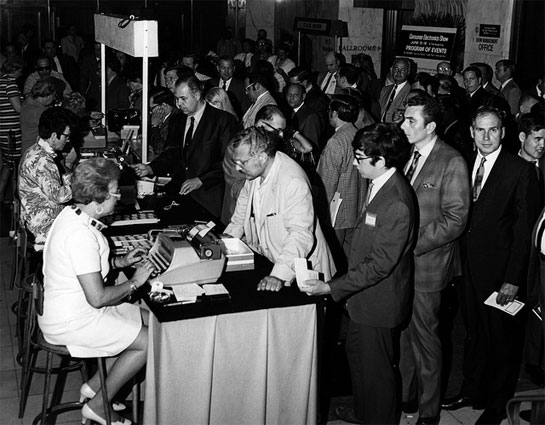The Case for CES

Over at the New York Times, Nick Wingfield has a story on CES 2012 with the gloomy title “A Tech Show Loses Clout as Industry Shifts.” He makes some good points. I’m not a CES apologist–in fact, I recently broached the question of whether Microsoft’s decision to pull out of the show after this year could conceivably be the beginning of the end, and wrote about some of its problems for Slate back in 2008.
Still, I came away from Wingfield’s piece unconvinced that there’s a new sea change going on in the industry that’s rendering CES less relevant than it has been in recent years.
Here’s why:
CES has never had anything like a monopoly on major product announcements. Wingfield points out that the iPad, iPhone, Kinect, and Kindle Fire weren’t announced at the show. But Apple, at least during Steve Jobs’ second time around, didn’t announce any products, major or minor, at CES. (Its absence certainly leaves a gaping hole in the show, but it’s a long-running one.
And you could come up with a list of famous tech products going back years that weren’t announced at CES. As Wingfield says, the Xbox was announced at the show in 2001. But the Xbox 360 wasn’t announced at CES. And neither was the PlayStation 2, the PlayStation 3, or the Wii. Or Windows 95. Or TiVo. Or the PalmPilot. I could go on.
New categories of tech products have been good for CES. Wingfield says that TV and stereos–the products that got CES going back in 1967–are no longer driving change in the consumer-tech industry. That’s true. But CES seems to be doing a pretty good job of being a key event for other types of products.
It became the computer industry’s default big show after COMDEX died in 2003, which is why one of the biggest trends at CES 2012 will be ultrabooks. There are going to be scads of tablets and phones at the show, too, even though two huge mobile shows, Mobile World Congress and CTIA, are coming up. And the camera business’s big event, PMA, is co-located with the show this year. As technologies have converged, they’ve all made their way to Vegas for CES.
In some cases, the fact that companies avoid CES is a sign that CES is successful. Wingfield quotes an analyst who says that CES isn’t a great place to announce products, because it’s too noisy. He also says that the fact that the show has 1.7 million square feet of exhibits makes it hard for new stuff to stand out. All of which inevitably brings to mind that Yogi Berra line about the restaurant that nobody goes to anymore–because it’s too crowded. And it’s a complaint that’s existed for as long as giant, jam-packed conferences have.
In many ways, CES is a relic. When I started writing about technology in the early 1990s, there were two CESes a year. And two COMDEXes. And two PC Expos. And two Macworld Expos which were both much bigger than the current incarnation of that event. The world doesn’t need anywhere near that many humongous tech conferences anymore, which is why the winter edition of CES is the only one left from that era that remains humongous.
It too could start to wither away, either soon or someday. But most of the show’s weaknesses as detailed in the Times story are perennial problems, not emerging threats. Despite them, I see no evidence that recent CESes have been anything other than overwhelming successes, especially given the rotten state of the economy. I’m looking forward to landing in Vegas this afternoon so I can take the pulse of the 2012 edition for myself.
[Photo at top of post: Conferencegoers register for the first CES in 1967.]
Comments are closed
Read more:













By Harry McCracken | Monday, January 9, 2012 at 2:25 am